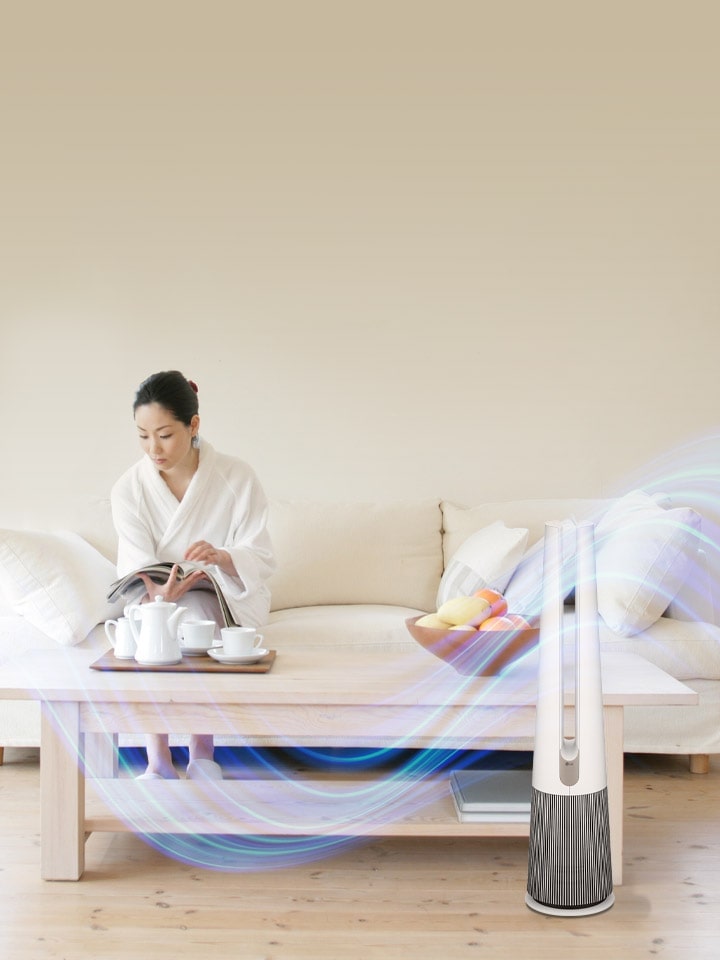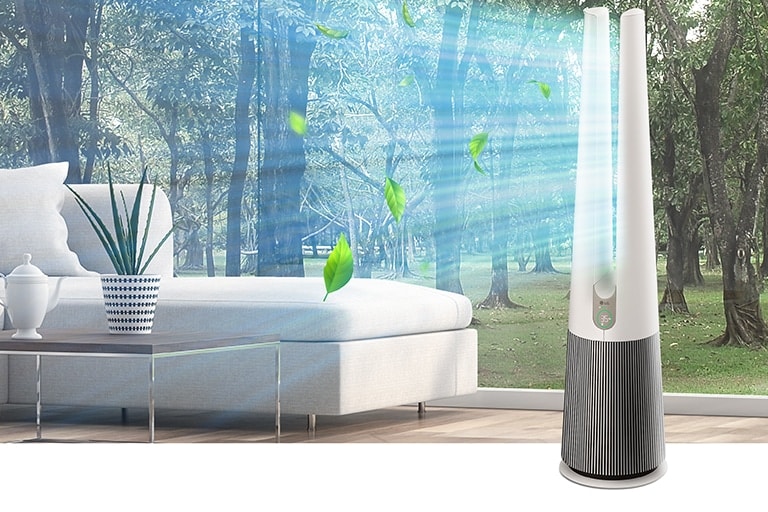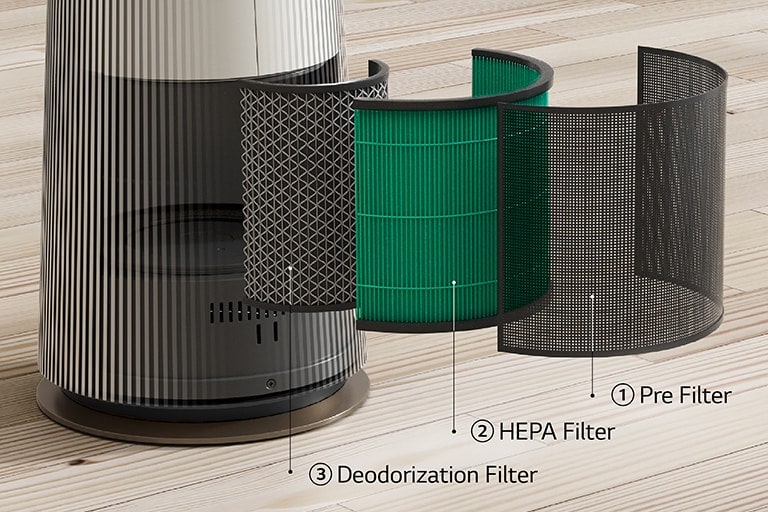We use cookies, including cookies from third parties, to enhance your user experience and the effectiveness of our marketing activities. These cookies are performance, analytics and advertising cookies, please see our Privacy and Cookie policy for further information. If you agree to all of our cookies select “Accept all” or select “Cookie Settings” to see which cookies we use and choose which ones you would like to accept.
Helpful Hints
Breathe Easier: Air Purifiers for Mould, Asthma, and Allergy Relief
Indoor air quality impacts your overall health. If you or someone you care about suffers from allergies, asthma, or mould sensitivity, air purifiers can make a significant difference. Let’s explore how they work and why they could be the solution you need.
Understanding Indoor Air Quality and Your Health
Did you know that indoor air can be up to five times more polluted than outdoor air?*1 From dust and pet dander to mould spores and volatile organic compounds (VOCs), various pollutants can wreak havoc on your respiratory health.
Poor indoor air quality doesn’t just cause sneezing or a stuffy nose. It can lead to more serious issues like allergy flare-ups, asthma attacks, respiratory infections, and even long-term lung damage.
Knowing what’s in your air is the first step to finding the right solution.
*1Source:
https://pmc.ncbi.nlm.nih.gov/articles/PMC7665158
https://pmc.ncbi.nlm.nih.gov/articles/PMC8886942
https://www.epa.gov/iaq-schools/why-indoor-air-quality-important-schools
Common Indoor Air Pollutants
• Dust and Pet Dander: These are known for triggering allergies and asthma. If you have pets, you’re likely battling this daily.*2
• Volatile Organic Compounds (VOCs): Found in cleaning supplies, paints, and even some furniture, VOCs can cause headaches, nausea, and respiratory irritation.*2
• Mould Spores: If you’ve ever dealt with mould, you know it’s more than just an eyesore. Airborne mould spores can cause severe allergic reactions and worsen asthma symptoms.*2
By understanding the pollutants in your environment, you can make informed decisions about which air purifier is best for your needs.
*2Source:
https://pmc.ncbi.nlm.nih.gov/articles/PMC5707925
https://www.epa.gov/indoor-air-quality-iaq/biological-pollutants-impact-indoor-air-quality
https://www.mdpi.com/2076-3298/9/9/118
https://www.mayoclinic.org/diseases-conditions/mold-allergy/symptoms-causes/syc-20351519
https://www.lung.org/clean-air/indoor-air/indoor-air-pollutants/dust-mites
https://publications.ersnet.org/content/erj/40/4/1033
How Air Purifiers Help with Allergies and Asthma
Air purifiers are effective for asthma and allergies by removing airborne allergens like dust, pet dander, pollen, and mould spores. The right air purifier can significantly reduce airborne allergens, providing much-needed relief.*3 Here’s how:
• High-Efficiency Particulate Air (HEPA) Filters: Designed to trap 99.97% of airborne particles as small as 0.3 microns. That includes dust, pet dander, pollen, and even some mould spores. *3
• Activated Carbon Filters: Activated carbon filters are great at absorbing odours and harmful VOCs. Whether it’s cooking smells, pet odours, or chemical fumes from cleaning products, these filters help keep your air fresh and safe to breathe. *3
• Reducing Asthma Triggers: Air purifiers aren’t just for allergy sufferers. They’re also excellent for asthma relief. By capturing dust mites, mould spores, and other asthma triggers, these devices can help you breathe easier and reduce the frequency of asthma attacks.*3
• Mould and Dust Mite Prevention
Mould and dust mites are two of the most common triggers for allergies and asthma. *3 Here’s how air purifiers can help reduce their impact:
• Fighting Mould Spores: Mould spores are tiny and can easily become airborne, worsening allergy and asthma symptoms. An air purifier with a HEPA filter can trap these spores, preventing them from circulating in your home. Additionally, maintaining proper air circulation and humidity levels helps reduce mould growth.*3
• Controlling Dust Mite: Dust mites thrive in humid environments. Using an air purifier with a HEPA filter and ensuring good air circulation can minimise dust mite accumulation, making your home a safer space for those with allergies or asthma.*3
*3Source:
https://www.epa.gov/mold/mold-course-chapter-9
https://www.worldallergyorganizationjournal.org/article/S1939-4551%2824%2900050-4/fulltext
https://pmc.ncbi.nlm.nih.gov/articles/PMC9022093
https://www.healthline.com/health/benefits-of-air-purifiers
https://acaai.org/allergies/management-treatment/living-with-allergies/air-filters/
https://onlinelibrary.wiley.com/doi/10.1155/2024/8847667
Choosing the Right Air Purifier
With so many options out there, finding the best air purifier for mould spores, allergies, or asthma relief can be overwhelming. Here’s what to consider:
• Room Size and CADR Ratings
• Room Size Considerations: Air purifiers are rated for specific room sizes. Smaller models suit bedrooms or offices, while larger models are better for open-plan spaces or rooms with high ceilings. Choose an air purifier powerful enough to cover the room’s square footage for optimal performance.
• Clean Air Delivery Rate (CADR): The CADR rating determines an air purifier's efficiency. It measures the volume of clean air delivered per minute, factoring in the particle size (like smoke, dust, and pollen) the purifier can filter. A higher CADR means quicker and more efficient air cleaning.
To get the best performance from your air purifier, match the manufacturer’s recommended room size with the CADR rating. A higher CADR will clean the air faster and cover a larger area, reducing the time needed to achieve clean air. It's generally better to choose a slightly more powerful purifier than one that’s underpowered for your space.
• Filter Types
• HEPA Filters: High-Efficiency Particulate Air (HEPA) filters are designed to capture particles as small as 0.3 microns, making them highly effective at trapping allergens such as dust, pollen, pet dander, and even mould spores*4. For those who suffer from allergies or asthma, a HEPA filter can be highly beneficial, as it can significantly reduce the airborne particles that trigger symptoms.
• Activated Carbon Filters: These filters are particularly good at removing odours. Activated carbon absorbs volatile organic compounds (VOCs) that are released by household products like paints, cleaning agents, or even furniture.*4 If you’re sensitive to smells or want to improve the freshness of the air, an activated carbon filter is ideal. It can also help in reducing harmful chemicals, creating a healthier indoor environment.
• UV Filters: Ultraviolet (UV) filters use UV light to neutralize bacteria, viruses, and other microorganisms in the air. They are most effective when combined with other filters, such as HEPA filters, to provide comprehensive air purification and address a wider range of air quality concerns.
• Optimal Placement and Maintenance
• For maximum efficiency, place your air purifier in the room where you spend the most time—like your bedroom or living room. Keep it away from walls or furniture to ensure proper air circulation. Also, remember to replace the filters as recommended by the manufacturer to keep your air purifier running efficiently.
*4Source:
https://www.epa.gov/indoor-air-quality-iaq/what-hepa-filter
Summary
It’s time to take control of your indoor air quality and create a healthier living environment. Investing in the right air purifier can make a world of difference, improving your indoor air quality and overall health. If you’re tired of battling allergies, asthma attacks, or mould sensitivity, an air purifier might be the solution you’ve been searching for.



